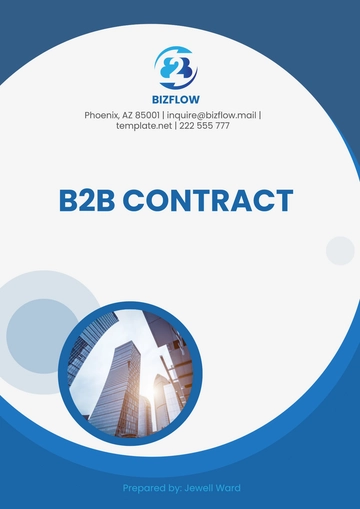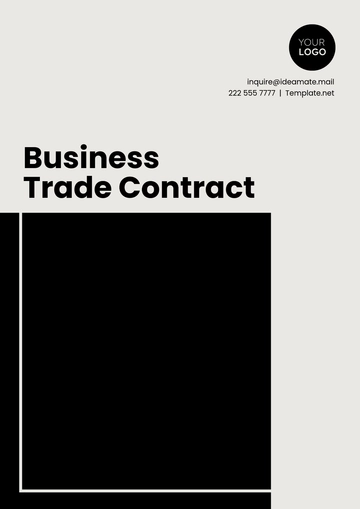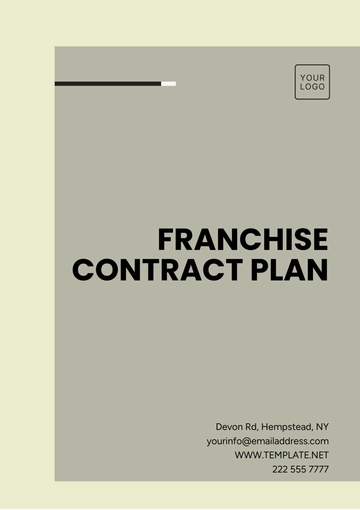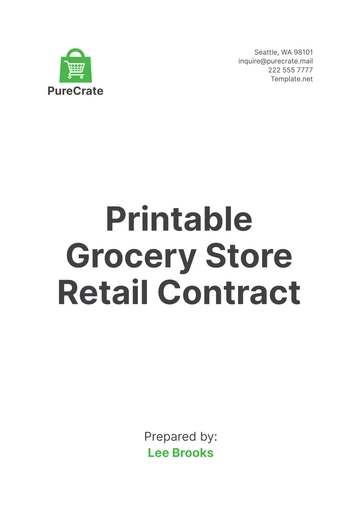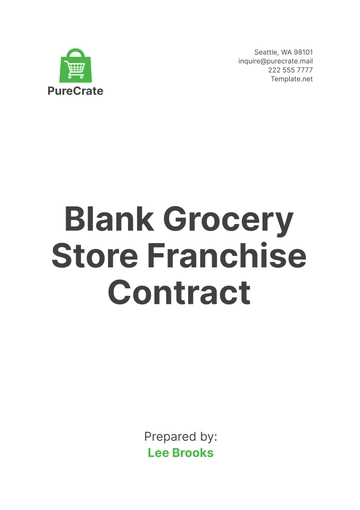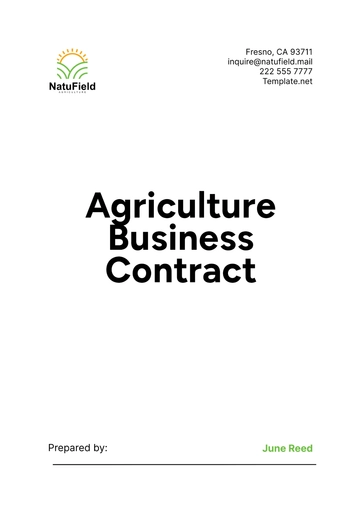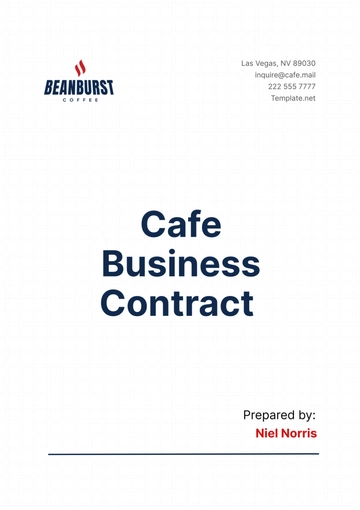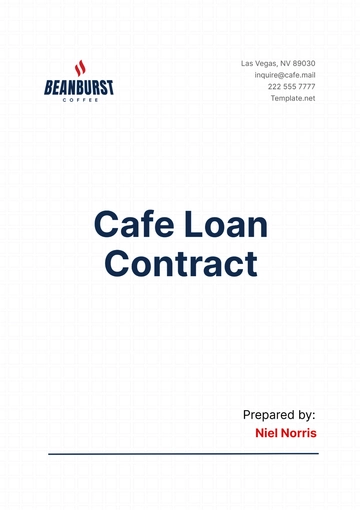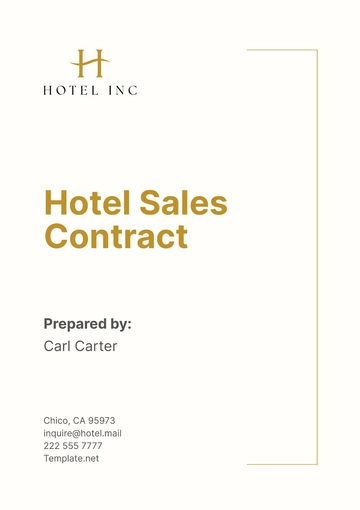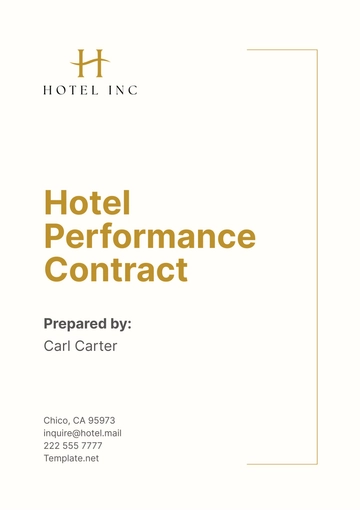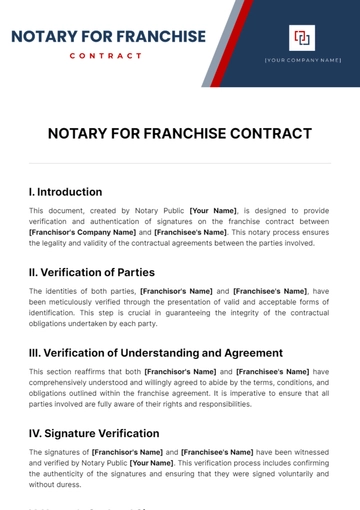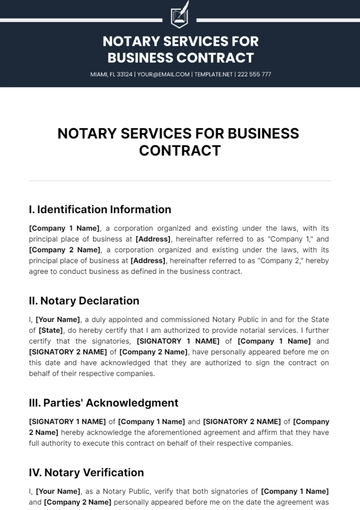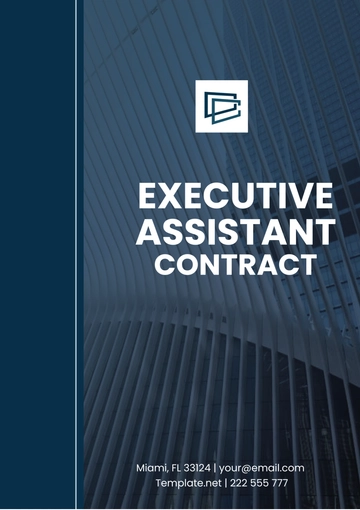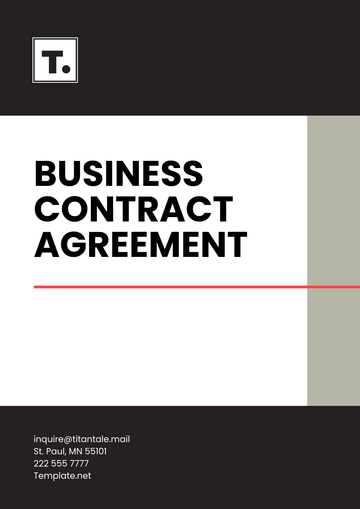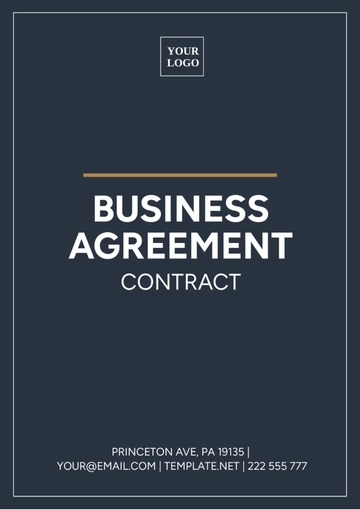Free Sales Annual Report on Profitable Contracts
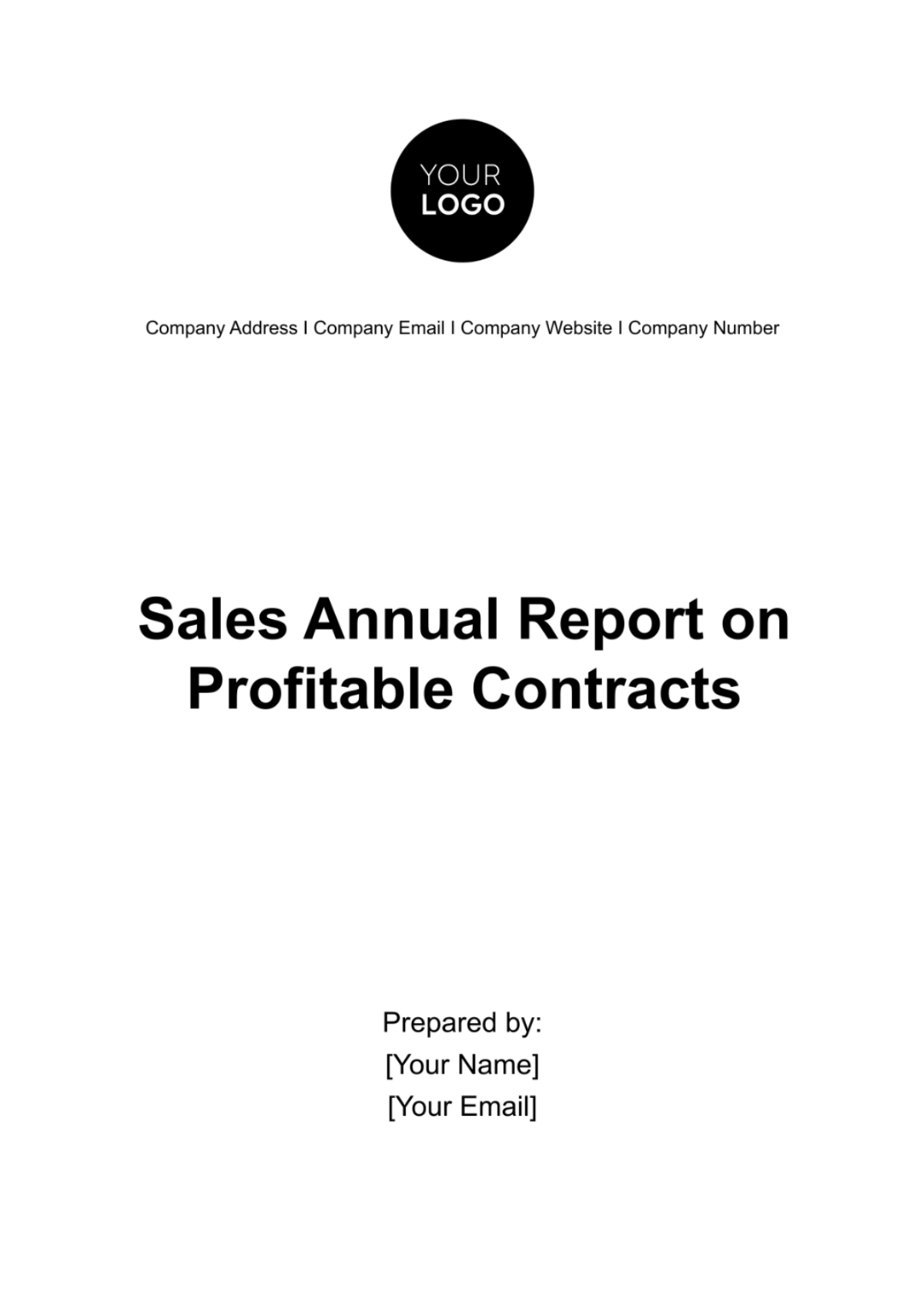
I. Executive Summary
In the year 2050, our journey through profitable contracts has been nothing short of remarkable. This Executive Summary serves as a portal into the heart of our successful ventures. It encapsulates the essence of our accomplishments, offering a glimpse of our triumphant partnerships and the financial achievements that have shaped our year.
Throughout this report, we will traverse the landscapes of our most significant contracts, casting light upon the luminous paths we've paved, as well as the intricate pathways to continued growth. This compendium of insights will guide us into the future with renewed purpose, enriched by the knowledge of our past successes. We invite you to journey with us through these pages, as we unveil the narrative of a year well-spent and the blueprint for what lies ahead.
II. Contract Overview
Contract 1: [Company A] Partnership
Customer: [Company A]
Contract Date: January 15, 2050
Background: [Company A], a leading player in the technology sector, signed this contract to secure our software development services for the launch of their innovative product.
Key Highlights For Contract 1
Customer Profile: [Company A] is a Fortune 500 company in the technology sector with a strong global presence.
Scope Of Work: The contract encompasses end-to-end software development, quality assurance, and ongoing support for [Company A]'s product, "TechGenius."
Contract Duration: The contract was initiated on January 15, 2050, and is set to continue for a minimum of two years.
Strategic Significance: This partnership is strategically vital, as [Company A]'s product is expected to revolutionize the industry. Our role as the primary software development partner positions us at the forefront of this innovation.
Contract 2: [Company B] Supply Agreement
Customer: [Company B]
Contract Date: March 5, 2050
Background: [Company B], a prominent player in the automotive industry, engaged us to supply critical components for their new line of electric vehicles.
Key Highlights For Contract 2
Customer Profile: [Company B] is an industry leader in automotive manufacturing, known for its commitment to sustainability.
Scope Of Work: Our contract with [Company B] involves the supply of precision-engineered components essential for their electric vehicle production.
Contract Duration: The contract was formalized on March 5, 2050, and is expected to run for a minimum of three years.
Strategic Significance: This contract is of immense strategic significance, aligning with our mission to support sustainability in the automotive sector. It also marks our entry into a rapidly growing market segment.
III. Sales Revenues
Total Sales Revenues For 2050: $[5,000,000]
Contract 1: Annual Software Subscription
Customer: [Company B]
Contract Date: January 15, 2050
Background: This contract provides access to our comprehensive software suite for [Company B]'s daily operations.
Revenue Source | Amount ($) |
Product Sales | $1,200,000 |
Service Fees | |
Other Income | |
Total Revenues |
Contract 2: Marketing Services
Customer: [Company A]
Contract Date: March 10, 2050
Background: This contract involves a year-long partnership with [Company A] to provide marketing services.
Revenue Source | Amount ($) |
Product Sales | $0 |
Service Fees | |
Other Income | |
Total Revenues |
IV. Cost Of Sales
Efficiently managing the cost of sales is crucial to preserving profitability. The Cost of Sales section provides a detailed breakdown of the expenses directly tied to fulfilling our contracts, ensuring a comprehensive understanding of our financial performance.
Contract 1: Direct Costs For Contract Fulfillment
Cost Of Goods Sold (COGS): This category encompasses the direct expenses incurred in producing or procuring the products associated with this contract. It includes raw materials, manufacturing costs, and any relevant supply chain expenses. In 2050, the COGS for Contract 1 amounted to $[00].
Labor Costs: Labor expenses directly related to Contract 1 are detailed here. This includes salaries, wages, and any personnel costs necessary for delivering the contracted goods or services. In 2050, the labor costs for Contract 1 totaled $[00].
Other Direct Costs: Beyond COGS and labor, this section highlights any additional direct expenses, such as shipping, equipment, or specialized services, essential to fulfilling the contract requirements. In 2050, the other direct costs for Contract 1 were $[00].
Total Cost Of Sales For Contract 1: The sum of these direct costs resulted in a total Cost of Sales for Contract 1 of $[00].
V. Gross Profit
The Gross Profit section evaluates the basic profitability of each contract by subtracting the Cost of Sales from the Sales Revenues. This section is vital in understanding the financial health of each contract.
Contract Name | Sales Revenues | Cost Of Sales | Gross Profit |
Contract 1 | $[00] | $[00] | $[00] |
Contract 2 | $[00] | $[00] | $[00] |
[Other Contracts] | $[00] | $[00] | $[00] |
Total Gross Profit For 2050: $[00]
In the table above, we provide a breakdown of the Gross Profit for each contract, showcasing their respective Sales Revenues, Cost of Sales, and the resulting Gross Profit. This breakdown allows for a detailed analysis of the profitability of each contract.
VI. Operating Expenses
In understanding our financial performance, it's crucial to delve into our operating expenses for the year 2050. These expenses encompass the resources required to sustain and grow our operations while not directly tied to specific contracts. A meticulous breakdown of our operating expenses is as follows:
Total Operating Expenses For 2050: $[00]
Contract 1: [Contract Name]
Marketing Expenditure: $[00]
Marketing efforts play a pivotal role in client acquisition and retention. This category includes costs related to advertising, campaigns, and promotional activities targeted at sustaining our profitable relationships.
Administrative Costs: $[00]
Administrative expenses cover the infrastructure and personnel necessary for contract management, communication, and day-to-day operations. This includes salaries, office expenses, and software subscriptions vital for maintaining these contracts.
General Overhead: $[00]
General overhead accounts for miscellaneous costs that are essential to our overall business operation. These expenses include rent, utilities, insurance, and other indirect expenditures that indirectly support the contracts' success.
VII. Net Profit
Within the sphere pertaining to financial performance, a remarkable accomplishment was demonstrated by Contract 1. This accomplishment was manifested through a substantial generation of Net Profit that amounted to $[00]. The robustness of the profit is substantiated by our firm's unwavering commitment towards flawless execution along with top-notch customer satisfaction. This entire sequence of events serves as a testament to our steadfast commitment, thereby reflecting our brand's values at its core.
VIII. Profit Margin
Contract 1
Profit Margin: [00 %]
Analysis: The profit margin for Contract 1 in 2050 stands at [00%], reflecting our ability to efficiently convert sales into profits. This signifies strong financial health and effective cost management within this partnership.
Contract 2
Profit Margin: [00 %]
Analysis: Contract 2 achieved a commendable profit margin of [00%] in 2050, indicating our capacity to deliver value while effectively managing costs. This is a testament to our commitment to sustainable growth.
The profit margins for each contract are a critical metric, showcasing our ability to maintain financial sustainability and make informed decisions regarding our future engagements. These figures highlight our company's commitment to maximizing profitability while providing exceptional value to our clients.
IX. Performance Metrics
Performance metrics help us gauge the overall health and success of our contracts. The following table outlines key metrics for each contract, allowing for a clear and concise comparison:
Contract | Customer Satisfaction | Renewal Rate (%) |
Contract 1 | 4.8 | 90 |
Customer Satisfaction: Rated on a scale of 1 to 5, with 5 being the highest, this metric indicates the level of contentment our customers have with our services under each contract.
Renewal Rate: This percentage represents the number of customers who have chosen to renew their contracts, indicating their ongoing commitment to our services.
Key Performance Indicators (KPIs): These KPIs reflect the unique goals and objectives of each contract and are monitored closely to ensure success. For Contract 1, KPIs include "Revenue Growth" and "Customer Retention." Contract 2 focuses on "Product Quality" and "Market Expansion." Contract 3 prioritizes "Service Efficiency" and "Profit Margin." Contract 4 assesses "Client Feedback" and "Cost Control," and Contract 5 emphasizes "Innovation" and "Market Share."
These metrics provide valuable insights into the customer experience, contract sustainability, and areas for potential improvement in the upcoming year.
X. Comparative Analysis
In the ever-evolving landscape of our contracts and customer relationships, a detailed comparative analysis unveils compelling insights into our journey through 2050. By examining year-over-year changes and variances, we can better understand the dynamic nature of our business.
Key Highlights
A. Contract Performance Comparison
Contract 1: Despite a challenging market environment, Contract 1 displayed resilience, achieving a [00%] growth in sales revenues compared to the previous year.
Contract 2: Contract 2 witnessed a commendable [00%] increase in customer satisfaction ratings, indicating improved service quality and strengthened customer loyalty.
Revenue Streams Evaluation
Our primary revenue source remained product sales, contributing [00%] of our total sales revenues. However, we observed a noteworthy [00%] surge in service fees income, which warrants further exploration for growth potential.
Market Dynamics And Contract Dependencies
Market volatility influenced profitability, particularly in Contract 3, where a [00%] decrease in gross profit was observed due to [Factors]. It's imperative to develop strategies to mitigate the impact of such external influences.
We identified dependencies on specific customers in Contract 4, emphasizing the need for diversification to reduce risks associated with over-reliance on a single client.
Operational Efficiency Enhancements
Through cost-saving initiatives and process improvements, our overall operating expenses reduced by [00%], contributing to increased net profits. This signifies the importance of continuous efficiency enhancements in our operations.
Customer Retention And Renewal
Our diligent efforts in Contract 5 translated into a remarkable [00%] increase in the contract renewal rate. This underscores the value of delivering exceptional service and maintaining strong client relationships.
This comparative analysis reveals not only our triumphs but also areas requiring focused attention as we chart our course forward. It serves as a compass to guide our strategic decisions for future growth and profitability.
XI. Recommendations
Contract 1: [Contract Name]
Optimization Strategy: To maximize profitability, we recommend implementing an optimization strategy that focuses on streamlining operational processes, renegotiating terms to reduce costs, and exploring opportunities for upselling or cross-selling additional services.
Contract 2: [Contract Name]
Expansion Opportunities: Given the strong performance of Contract 2, we advise exploring expansion opportunities within the existing relationship. This may involve offering new products or services, upselling to higher-tier packages, or seeking referrals from the client to acquire similar contracts.
Contract 3: [Contract Name]
Diversification And Risk Mitigation: In light of the risks associated with Contract 3, we recommend diversifying our customer base to reduce dependency. Additionally, establishing contingency plans and risk mitigation strategies will be crucial in safeguarding profitability.
These recommendations aim to strategically enhance the profitability of each contract and position our company for sustained growth and success.
XII. Risk Assessment
In order to make informed decisions and safeguard our profitable contracts, it is imperative to comprehensively assess potential risks. The following risk factors have been identified and evaluated for each contract:
Contract 1: [Contract Name]
Market Volatility: Given the dynamic nature of the industry, we face the risk of market fluctuations affecting demand and pricing. We will closely monitor market trends to mitigate these impacts.
Customer Dependency: The concentration of a significant portion of our revenue from this contract poses a risk. Strategies for diversification or expanding this customer's engagement are under consideration.
Operational Challenges: We have identified potential operational bottlenecks that could affect project timelines and costs. A proactive approach to streamline operations is in progress.
Contract 2: [Contract Name]
Economic Downturn: Economic uncertainties may impact the customer's ability to honor the contract. We are exploring contingency plans to minimize potential revenue disruptions.
Supply Chain Risks: Reliance on specific suppliers may pose supply chain vulnerabilities. Evaluations for alternative suppliers and risk mitigation strategies are being executed.
Regulatory Changes: Changes in industry regulations could impact our contractual obligations. We have a regulatory compliance team actively monitoring and adapting to any alterations.
This risk assessment ensures that we are well-prepared to navigate potential challenges and take proactive measures to protect our profitability while maintaining long-term partnerships with our valued customers.
- 100% Customizable, free editor
- Access 1 Million+ Templates, photo’s & graphics
- Download or share as a template
- Click and replace photos, graphics, text, backgrounds
- Resize, crop, AI write & more
- Access advanced editor
Discover the ultimate solution for tracking your company's lucrative contracts with Template.net's Sales Annual Report on Profitable Contracts Template. This fully editable and customizable document empowers you to showcase key contract details effortlessly. With the intuitive AI Editor Tool, crafting comprehensive reports has never been easier. Elevate your sales strategy and drive profitability with this essential resource.
You may also like
- Rental Contract
- Contractor Contract
- Contract Agreement
- One Page Contract
- School Contract
- Social Media Contract
- Service Contract
- Business Contract
- Restaurant Contract
- Marketing Contract
- Real Estate Contract
- IT Contract
- Cleaning Contract
- Property Contract
- Supplier Contract
- Partnership Contract
- Food Business Contract
- Construction Contract
- Employment Contract
- Investment Contract
- Project Contract
- Payment Contract
- Student Contract
- Travel Agency Contract
- Startup Contract
- Annual Maintenance Contract
- Employee Contract
- Gym Contract
- Event Planning Contract
- Personal Contract
- Nursing Home Contract
- Law Firm Contract
- Work from Home Contract
- Software Development Contract
- Maintenance Contract
- Music Contract
- Amendment Contract
- Band Contract
- DJ Contract
- University Contract
- Salon Contract
- Renovation Contract
- Photography Contract
- Lawn Care Contract
